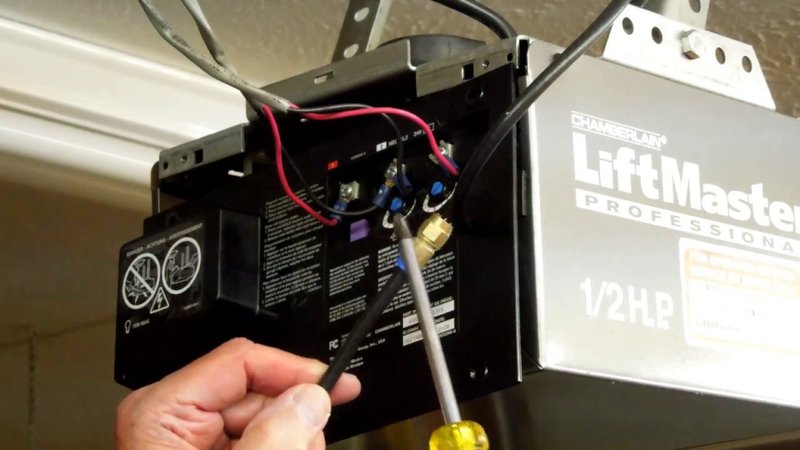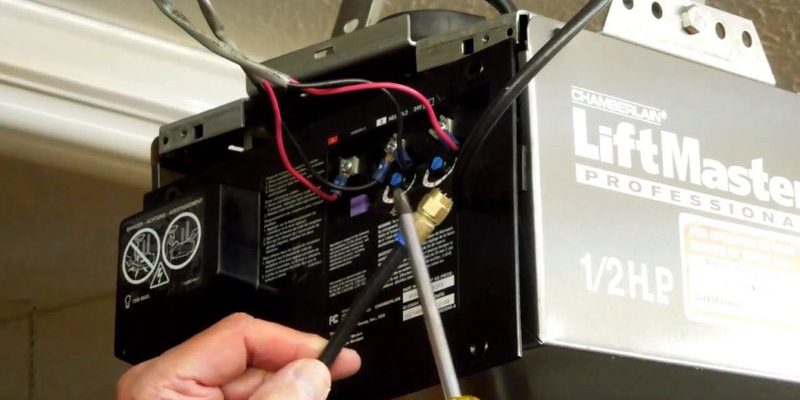
Genie is a well-known brand in the garage door game. Their remotes are designed to work seamlessly with their openers, using radio frequencies to send simple “open” or “close” signals. But the world is absolutely jam-packed with invisible radio waves these days. Sometimes, your Genie remote has to compete with a crowd of other signals, kind of like shouting in a busy room where everyone’s talking over each other.
So, what exactly gets in the way? And what can you do about it? Let’s break it down, minus the tech jargon, but with plenty of honest, plain-English troubleshooting.
How Garage Door Remotes Like Genie Send Signals
Here’s the thing: when you press the button on your Genie remote, it’s not much different from using a walkie-talkie. The remote uses a built-in transmitter to send a *radio frequency (RF)* signal to a receiver unit in your garage door opener. That signal says, “Hey, it’s me—open Sesame!” The “code” part just makes sure it’s your door and not your neighbor’s.
Most modern Genie remotes use rolling code technology—basically, the code changes every time you use it, so it’s more secure. Pairing, syncing, and resetting the remote all revolve around making sure the transmitter and receiver are on the same page.
But—here’s where interference sneaks in. Anything that blocks or messes with that radio wave can prevent your opener from getting the message. It’s kind of like static on old-school FM radio, or a dropped call on your cell phone. The more crowded the “airwaves,” the more likely your signal gets drowned out, ignored, or scrambled.
Common Household Causes of Signal Interference
You might be wondering: what in my home could possibly disrupt a garage remote? Honestly, everyday gadgets are often the culprits. There’s a surprising list of things inside most garages or nearby rooms that spill out radio signals—or worse, soak them up.
- Wi-Fi routers and modems: These devices blast out signals in the same 2.4 GHz or 5 GHz range where some remotes operate. If your garage has strong Wi-Fi, it can cause overlap or “noise” that muddles the remote’s frequency.
- LED lights or CFL bulbs: Certain bulbs—especially cheap LED garage lights—can emit radio frequency interference, either through poor wiring or bad manufacturing. You flip on the light, and suddenly your opener acts up.
- Wireless security cameras and alarms: Most wireless cameras use RF to send video to your phone. Place one too close to the opener, and it’s like putting a megaphone right next to someone trying to whisper.
- Microwaves: It might sound odd, but if your garage shares a wall with your kitchen, a running microwave can leak RF interference, especially if the door seal’s gotten old.
Think of your Genie remote signal like a swimmer trying to cross a pool. If the water’s packed with other swimmers thrashing around, it has a much harder time reaching the other side.
Outside Sources: Neighbors, Towers, and Nearby Signals
The struggle doesn’t always start at home. Sometimes, signal interference comes from outside your walls. Here’s where it gets tricky—most people never think to blame the neighbor’s gadgets or a cell tower down the street.
- Neighbor’s garage openers: If you live close enough that garage doors are practically side by side, two remotes might use overlapping frequencies. Genie uses rolling codes, but rare overlaps can still happen, especially with old units.
- Radio towers or cell phone relays: If there’s a radio tower or cellular relay nearby, the sheer volume of signals in the air can create background interference that makes it harder for your remote’s weak signal to stand out.
- Two-way radios or ham radios: Hobbyists with powerful equipment can unintentionally swamp the airwaves in your block. Sometimes your garage door remote becomes collateral damage.
If your remote only misbehaves at certain times of day or after new construction in the neighborhood, outside interference may be the hidden villain.
Battery Problems That Mimic Interference
Let me explain why batteries matter way more than you’d expect. Low or dying batteries in your Genie remote are like a tired runner—barely able to make it across the finish line. The signal gets weak, fuzzy, and much easier for interference to squash.
A remote with a fresh battery shouts, while a dying battery barely whispers. Many people spend ages troubleshooting interference, only to find a simple battery swap fixes the problem.
- Signs of weak battery: The garage door opens only when you’re close, or only after repeated presses.
- Check before panicking: Always replace the battery first, then see if the interference “magically” disappears.
Batteries are so easy to overlook, but honestly, they’re top of the troubleshooting list for a reason.
Physical Barriers: Walls, Metal, and Distance
Not all interference comes from invisible signals. The physical layout of your garage—and what’s in it—can seriously block remote signals. Some things just eat radio waves, stopping them from ever reaching the receiver.
- Concrete or brick walls: If your receiver is tucked behind thick masonry, the signal has a tough time getting through.
- Metal storage racks or vehicles: Metal is famous for reflecting or absorbing radio waves. A big SUV or stack of bikes between you and the opener is like putting up a roadblock.
- Distance: Every foot you add between the remote and receiver makes the signal weaker. Genie remotes generally work up to 100 feet, but walls, furniture, and clutter shrink that number fast.
Here’s an easy way to test: stand closer to the opener and see if the problem goes away. If it does, something physical is probably in the way.
Faulty Wiring or Broken Antenna On the Garage Opener
Sometimes, the real headache isn’t with the remote at all. The receiver antenna on the opener—usually a little wire hanging down—needs to be intact and positioned right to “listen” for the remote. If it’s bent, broken, or tucked away behind metal, your opener might not hear a thing.
- Frayed or missing antenna wire: Check that thin wire on your Genie opener. If it’s missing or snipped, you’ve found your culprit.
- Loose wiring inside the opener: The connections inside can come loose over years of vibration and temperature changes. If you’re comfortable, unplug the opener and look for obvious loose wires; otherwise, call in a pro.
- Recent electrical work: Had new outlets or lights installed in the garage? Sometimes electricians accidentally disconnect or mess with control wires, accidentally causing signal problems.
Honest opinion—if you’ve ruled out everything else, give the receiver a close look. It’s an unsung hero and a common cause of “mystery” interference.
Resetting, Re-Syncing, and Re-Pairing Your Genie Remote
Even if everything else checks out, sometimes the remote and opener just lose their connection. Maybe you replaced the battery, moved houses, or had a recent power outage. In those cases, a simple reset, sync, or re-pair can work wonders.
- Resetting the remote: Most Genie remotes have a “learn” button on the opener and a pairing procedure detailed in the manual. Press and hold to reset the link, then press the remote button to re-sync.
- Clearing memory: If you suspect someone else’s remote or a universal remote is interfering, you can usually wipe all paired remotes from the opener and start fresh.
- Updating rolling codes: Sometimes repeated use or battery changes can cause code mismatch errors, which look exactly like signal interference.
No shame in going step-by-step through the pairing process—nine times out of ten, it’s less stressful than you’d expect.
Universal vs. Brand-Specific Genies: Compatibility and Interference
You might be tempted to try a universal garage remote, thinking “signals are signals, right?” Well, kind of. Universal remotes work with many brands, but compatibility can be hit-or-miss, especially with Genie’s more secure rolling code tech.
- Universal remotes: These can introduce extra troubleshooting headaches—sometimes failing to sync perfectly or sending weaker signals than the “official” Genie remote.
- Brand-specific Genie remotes: These are built to pair and communicate flawlessly with Genie openers, reducing the risk of interference or pairing mishaps.
- Programming differences: Universal models often need more careful syncing, and may need code updates if you change other devices in your garage.
If you’re experiencing interference and using a universal remote, honestly, trying an official Genie remote can sometimes cut through the problem.
Troubleshooting Steps for Genie Garage Remote Signal Interference
If your Genie garage remote still isn’t behaving, here’s a step-by-step troubleshooting routine I’d actually use myself:
- Check and replace the battery: Start simple. Fresh battery, every time.
- Remove common sources of interference: Turn off Wi-Fi routers, unplug LED lights, and take other RF-emitting gadgets offline temporarily. Test the remote each time to spot the offender.
- Change positions: Stand closer to the opener, move large metal objects, and test without the garage door closed (if safe).
- Inspect the opener: Check the antenna and wiring for damage or improper placement.
- Re-sync or reset: Perform a full reset and re-pair of the remote and opener following Genie instructions.
- Try a different remote: Borrow another Genie remote if possible. If the new one works, your old remote might be faulty.
Sometimes, finding the cause of interference feels like detective work! Go step by step—don’t jump ahead—and you’ll usually spot the culprit.
Final Thoughts on Signal Interference and Your Genie Garage Remote
Signal interference with Genie garage remotes is annoyingly common, but rarely unsolvable. The mix of invisible radio waves, physical obstacles, and electrical noise turns your garage into a little RF battleground—no wonder the remote sometimes gets lost in the shuffle.
Take it one step at a time: check the easy stuff first, like batteries and obvious gadgets. Then, move on to physical barriers and opener wiring. Don’t be afraid to reset or re-sync the remote, especially after battery swaps or power outages. While universal remotes are handy, sticking with Genie’s own models usually keeps things simple and reliable.
When you know what can get in the way, troubleshooting feels a lot less mysterious—and a lot more satisfying when you finally hit that button and the door glides open like it should.
